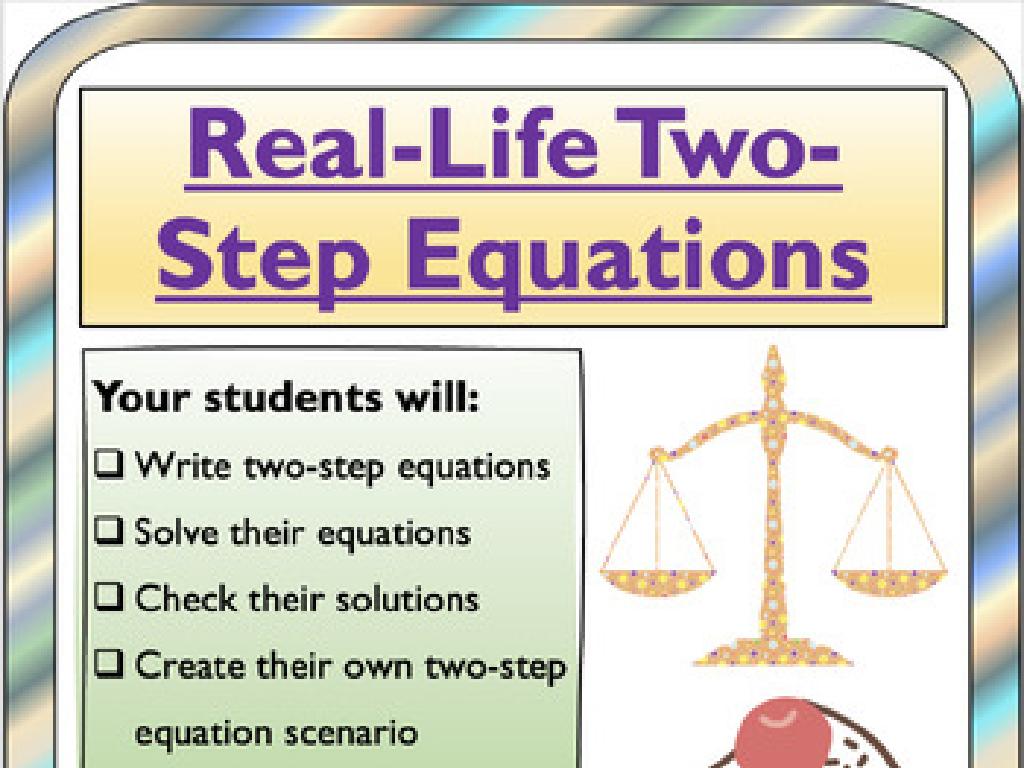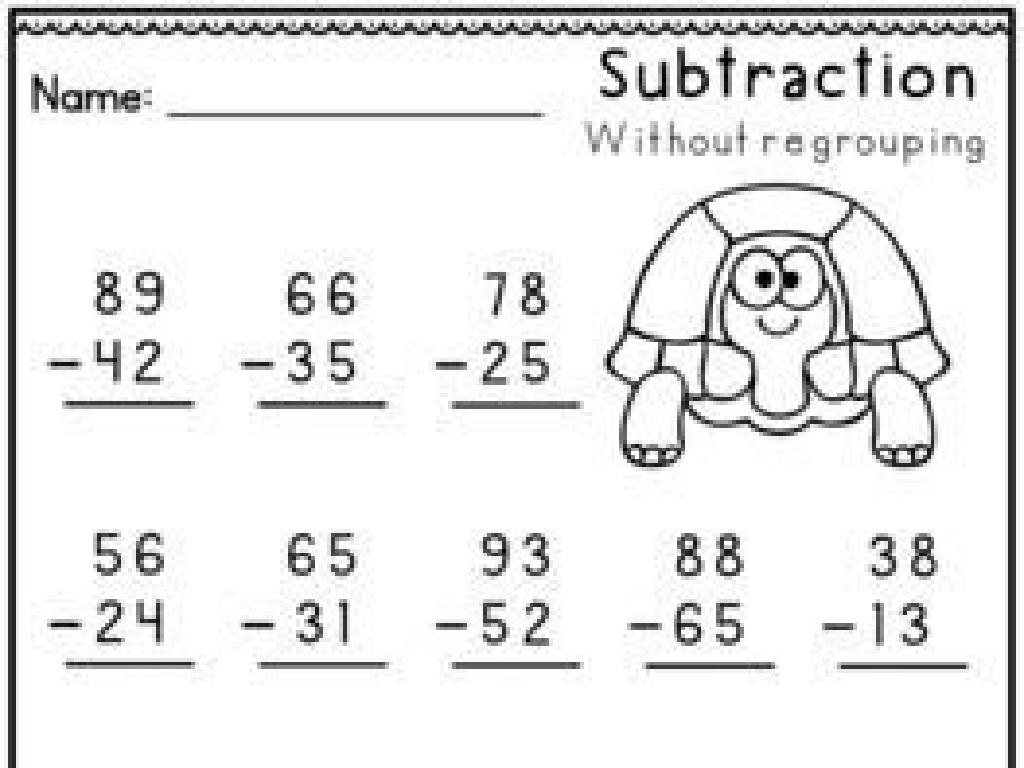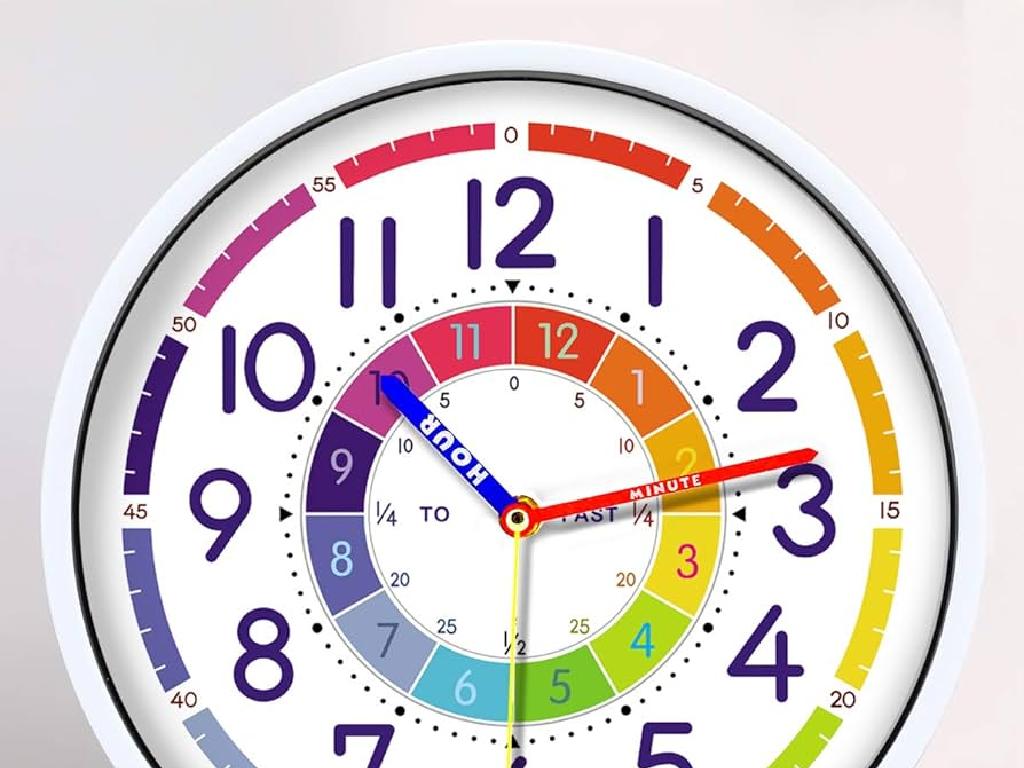Estimate Sums And Differences Of Decimals
Subject: Math
Grade: Sixth grade
Topic: Add And Subtract Decimals
Please LOG IN to download the presentation. Access is available to registered users only.
View More Content
Estimating Sums and Differences of Decimals
– Quick recap on decimals
– Decimals represent fractions of a whole.
– Focus: Estimating sums & differences
– Round numbers to estimate the result quickly.
– Why learn estimation?
– Estimation helps in making quick & reasonable calculations.
– Practice estimation with examples
– Use everyday scenarios to apply estimation skills.
|
Begin with a brief review of what decimals are and how they represent parts of a whole, ensuring students recall their previous lessons. Transition to the main topic of estimating sums and differences, emphasizing the importance of this skill for making quick, yet accurate, calculations in everyday life. Explain that estimation is not about finding the exact answer but rather a close approximation that is reasonable. Provide examples such as estimating the total cost of items while shopping or calculating the time needed to complete a task. Encourage students to practice by rounding decimals to the nearest whole number or to one decimal place before adding or subtracting. This slide aims to build a foundation for students to understand and apply estimation in various contexts.
Understanding Estimation in Decimals
– What is estimation?
– Estimation: Making an educated guess about a number.
– Daily life estimation examples
– Guessing time to complete homework, or money to save for a toy.
– Estimation versus exact calculation
– Estimation gives a quick, close answer; exact calculation gives the precise number.
– Practice estimation with decimals
– Round decimals to nearest whole number to estimate sums and differences.
|
This slide introduces the concept of estimation, which is a fundamental skill in mathematics and daily decision-making. Estimation allows students to make quick, reasonable guesses about quantities without needing an exact number. Provide examples from everyday life where estimation is useful, such as estimating time or money. Highlight the difference between estimation and exact calculation, emphasizing that estimation is faster but less precise. Encourage students to practice by rounding decimals to the nearest whole number to estimate sums and differences, preparing them for more complex calculations in the future. This skill will help them in making quick decisions and checking the reasonableness of their answers when solving problems.
Rounding Decimals
– Review rounding rules
– Remember: < 5 down, e 5 up
– Round to nearest whole number
– Drop decimal part, follow rounding rules
– Group rounding practice
– We'll round decimals as a class activity
– Understand rounding importance
|
Begin with a quick review of the basic rounding rules, emphasizing the ‘less than 5, round down; 5 or greater, round up’ concept. Then, demonstrate how to round decimals to the nearest whole number by dropping the decimal part and applying these rules. Engage the class with a group activity where students round provided decimal numbers together, fostering a collaborative learning environment. Highlight the importance of rounding in estimating sums and differences, which simplifies calculations and helps in making quick, yet reasonable, judgments in everyday math scenarios. Prepare several examples with varying decimal places for the practice activity, ensuring students grasp the concept with hands-on experience.
Estimating Sums with Decimals
– Learn to estimate by rounding
– Round each number to the nearest whole before adding
– Example: Sum of two decimals
– If we have 3.6 + 4.4, we round to 4 + 4, which estimates the sum as 8
– Group Practice: Estimate sums
– Work together to estimate sums like 2.3 + 5.7, 6.8 + 1.9
– Discuss estimation accuracy
|
This slide introduces students to the concept of estimating sums by rounding decimals to the nearest whole number. Start by explaining the importance of estimation in everyday math and proceed to demonstrate rounding. Use the example provided to show how to round each decimal before adding to get an estimated sum. For group practice, encourage students to work in pairs or small groups to estimate the sums of the given decimal numbers, discussing their methods and results. Emphasize that estimation is a useful skill for making quick calculations and that while it’s not exact, it can be quite close to the actual sum.
Estimating Differences with Decimals
– Learn to estimate by rounding
– Round decimals to nearest whole number before subtracting
– Example: Estimate decimal differences
– Compare 15.6 – 7.8 by rounding to 16 – 8
– Group Practice: Estimate differences
– Work together to estimate: 12.9 – 3.4, 8.7 – 5.6, etc.
– Understanding estimation accuracy
|
This slide introduces students to the concept of estimating differences by rounding decimals to the nearest whole number. Start by explaining the importance of estimation in everyday math and its usefulness in checking the reasonableness of answers. Show an example by rounding each decimal to the nearest whole number and then subtracting. For group practice, provide a set of decimal differences for students to estimate as a class activity. Discuss the results and emphasize that while estimates are not exact, they should be close to the actual answer. This will help students understand the concept of accuracy in estimation.
The Power of Estimation
– Understanding estimation
– Estimation in daily life
– Rounding prices while shopping or budgeting
– Estimation’s role in math
– Helps in checking the reasonableness of answers
– Discussing estimation applications
– Think of examples like cooking, time management, etc.
|
This slide aims to highlight the significance of estimation in various aspects of life, not just in mathematics. Begin by explaining what estimation is and how it can be a powerful tool for making quick and efficient decisions. Provide everyday examples where estimation is useful, such as when shopping and trying to keep within a budget, or when cooking and needing to adjust recipes. Emphasize the importance of estimation in math as a way to check the reasonableness of answers. Engage the class in a discussion to explore other areas where they might use estimation, such as in planning their time for activities or estimating distances while traveling. This will help students see the practical applications of the math skills they are learning.
Class Activity: Estimation Station
– Pair up for estimation activity
– Estimate total cost of shopping items
– Round each item’s price, then add or subtract
– Use rounding for sums and differences
– Discuss estimates with the class
– Explain your estimation process and compare with others
|
This interactive class activity is designed to enhance students’ estimation skills using practical examples. Students will work in pairs to simulate a shopping experience where they must estimate the total cost of items on a provided shopping list. They should apply their rounding skills to estimate the sums and differences of the item prices. After completing the activity, each pair will share their estimated totals with the class and discuss the various outcomes and methods used. As a teacher, facilitate the discussion by asking questions about their rounding choices and how close their estimates were to the actual prices. Provide guidance on effective rounding techniques and encourage students to consider the usefulness of estimation in everyday life. Possible variations of the activity could include estimating the change returned from a purchase, comparing estimated and actual costs of recipes, or budgeting for a small event.






